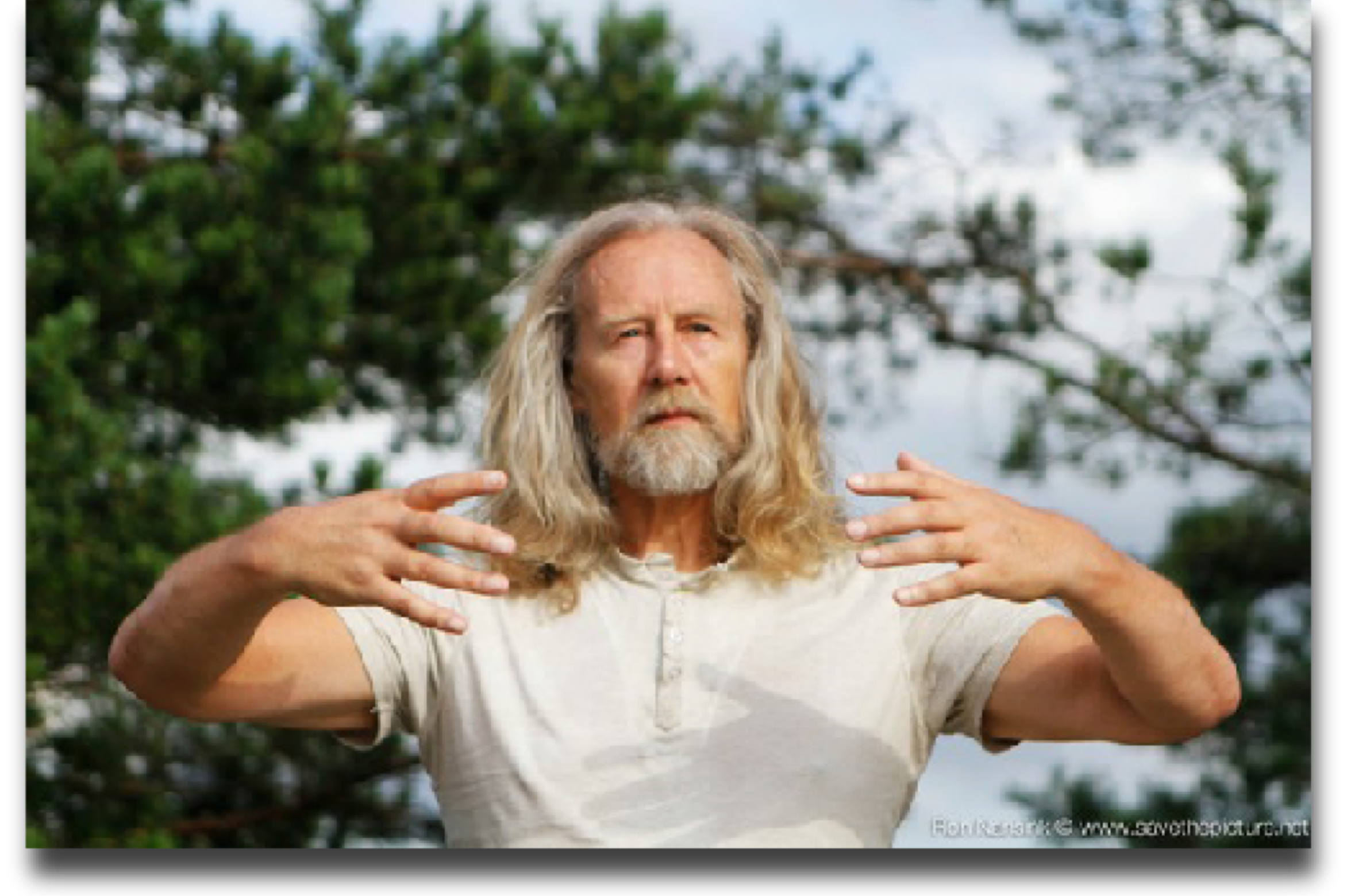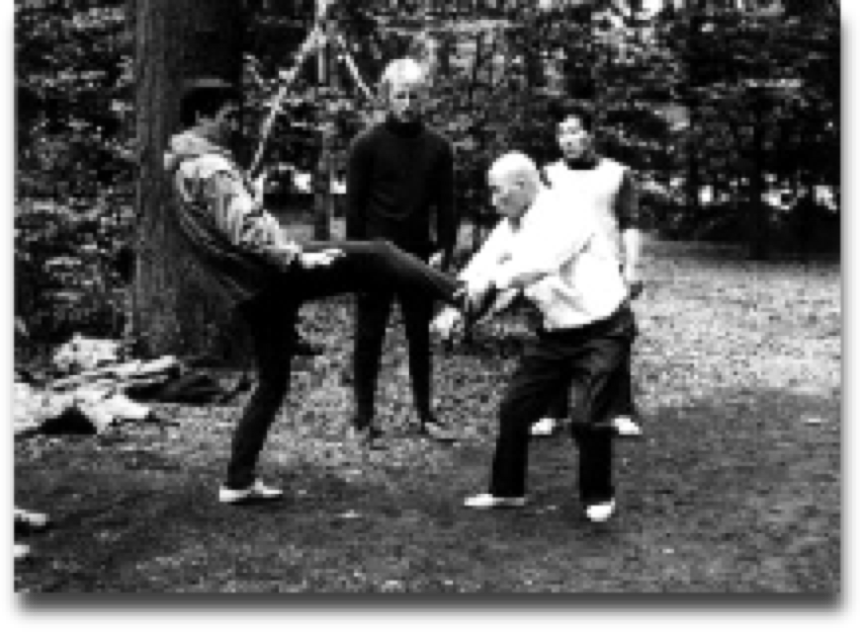

the
TAIKIKEN
pages

2026


Discover the journey of Ron NANSINK sensei in Taikiken and Taijiquan. From Kyokushin karate to intensive Taikiken study in Japan, learn from a talented sensei.
He was just a boy when it all began—learning the throws and locks of judo, discovering a love of martial arts that would guide him across continents and traditions. In 1967, a young and hungry Ron stepped into Amsterdam’s legendary Jon Bluming honbu dojo under the watchful eye of Rinus Schulz, a sixth dan in Kyokushin karate. At that time, karate in Europe was still carving its niche, and Ron was there on the front lines, absorbing the spirit of contact and technique that would shape him as an athlete and a thinker.
By the early 1970s, Ron found himself in another hallowed training hall—Jan Kallenbach’s Shin Bu Ken dojo in Amsterdam Osdorp, The Netherlands. There, he encountered something that would transform his martial journey: Taikiken. Under the guidance of Yoshimichi Sato, son-in-law of the legendary Kenichi Sawai, Ron discovered a discipline that was streamlined, purposeful, and deeply spiritual. Already holding a black belt in Kyokushin, he was struck by Taikiken’s subtle genius—the simplicity, the raw effectiveness, the way each movement seemed connected not only to the body, but to the very essence of life itself.
When Sato returned to Japan, Ron continued training under Akio Sawai and Iwama Norimasa, two gifted teachers who carried Kenichi Sawai’s vision forward. The relationship would set the stage for a pilgrimage few ever make. In 1975, Ron took his practice straight to the source—traveling to Japan for seven months of intensive training in Meiji Jingu, where Master Kenichi Sawai himself watched over the dawn practices. With Sawai sensei’s blessing, Ron worked closely with Masashi Saito, a senior student who introduced him to a rigorous daily regimen. Morning after morning they met before sunrise—half an hour of standing meditation (Ritsuzen), crawling exercises (Hai), foundational stepping (Mo Ca Bu), and testing force (Shi Li), followed by pushing hands (Tui Shou) and rounds of Taijiquan. After a short breakfast break, it was back to Meiji Jingu to practice again, sometimes under the watchful gaze of Hatsuo Royama. Royama sensei added his own artistry to Ron’s arsenal, including a unique three-line stepping system and the devastating “Ro kick” (mawashi gedan geri).
This was a rare era of martial insight. Every Sunday, Kenichi Sawai would appear, sharing knowledge with those he called “fellow Taikiken trainees.” Ron soaked it all in—whether it was personal attention from Sawai sensei at the dojo, at Sawai’s home, or even over a meal at his intimate little restaurant in Ikebukero. His world continued to open up. Through Masashi Saito, who studied Taijiquan with Master Wang (O. Sensei), Ron delved deeper into “Orthodox Taijiquan,” tracing a lineage through Wang Shu Chin (Wang Shu Jin), a revered figure known for blending power and insight in equal measure.
Back in Tokyo in the late ’70s, his friend Hans Zending introduced him to Yashuhide Takagi, a gifted karate instructor at Hosei University. After seeing Ron’s Taikiken skill, Takagi was so inspired that he pivoted to Taikiken himself, later becoming one of Sawai Sensei’s top disciples and a respected ambassador of the art. When Sawai Sensei passed away in 1988, Ron, still residing in Tokyo, attended the funeral rites to pay homage to the man who had so thoroughly shaped his understanding of movement and meaning.
Ron’s search for deeper roots led him to China, where he spent extended periods tracing the origins of Taikiken back to Yiquan and Kenichi Sawai’s own teacher, Wang Xiangzhai. There he also studied Taijiquan, Shaolin wushu, and Chinese martial arts in their pure cultural contexts, seeking the philosophical bedrock that underpinned the practices he’d come to love. He found resonance in Taoist thought, its clarity and utility informing his perspective on training, living, feeling, and thinking. In 1978, Ron was granted a rare Taoist initiation at the Wong Loo Sen See Chee Choong Temple in Kuala Lumpur—an immersion into the Wuji (the supreme void), an experience that would forever deepen his understanding of the metaphysical undercurrents of the martial arts.
Armed with these insights, Ron fused the emptiness of Wuji into the spontaneous waza, as Sawai sensei referred to it, breathing new life into Taikiken and making it a tool not only for combat, but for leadership, management development, and holistic mind-body enrichment. By integrating Taoist principles and embracing Taikiken’s Yiquan roots, Ron has found that this deep well of martial wisdom informs and enhances related disciplines—Karate, Aikido, Pentjak Silat, Tai Chi Chuan, Shaolin, Kung Fu, self-defense, and even meditation. In his hands, Taikiken remains a living, evolving tradition—anchored in history, enriched by philosophy, and powered by the relentless curiosity of a boy who never stopped learning.
Taikiken applications
Ron ritsuzen
Taikiken Summer workshops
Taikiken PDF publications in the Dutch language:
In het begin van de jaren 80 publiceerde het toen populaire krijgskunst magazine ZEN DO KAN twee door Ron geschreven artikelen over Taikiken en zijn belevenis van training op dat moment. Publikaties Zendokan 1.2.PDF
Eind jaren 90 publiceerde Jonas magazine een artikel over Ron en de filosofie achter zijn vechtkunst.
Jonas 99.PDF
Taikiken in Body & Mind magazine februari 2006: Tai ki ken Vechtkunst met gevoel. Taikiken Body Mind.pdf
Kijk voor seminars in Nederland op https://taikiken.org/agenda.html
Ron’s Flickr Photo sharing account
https://www.flickr.com/photos/savethepicture/



Contact Ron Nansink







